Types and varieties of rowan
The familiar name Rowan hides great diversity: more than 200 species of wild rowan, about a third of which grow in Russia. The culture is widespread in Europe, Asia and North America. Varieties of red and chokeberry are used in cooking and landscape design.
| Content:
|
Video review of types and varieties of rowan from Natalia Samoilenko:
|
Many varieties of rowan have not only a beautiful appearance, but also tasty, healthy fruits |
What are the varieties and types of rowan
- The most common and famous species is the common rowan, an unpretentious wild-growing tree.
- Nevezhinskaya Rowan, originally from the village of Nevezhino, is not a separate species, but a special form of ordinary rowan.
- Yellow-fruited Rowan is also a variety of common rowan, distinguished by large fruits. The berries have a pleasant sweet and sour taste with a high content of vitamin C.
- Crimean large-fruited or homemade. The fruits have a high sugar content and excellent taste.
All types of rowan are decorated with large corymbose inflorescences. The leaves have differences in size, shape and color as in the description and in the photo. Fruit ripening occurs in late August–early September. Almost all mountain ash fruits are edible.
Plants of the Rowan genus belong to the Rosaceae family, and this makes it possible to cross them with other members of the family: pear, chokeberry, apple tree, medlar.
The following intergeneric hybrids exist:
• Malosorbus - a hybrid of rowan and apple tree.
• Sorbapyrus - a hybrid of rowan and pear.
• Sorbania - a hybrid of rowan and chokeberry.
• Krategosorbuz - a hybrid of rowan and hawthorn.
• Amelosorbus - a hybrid of rowan and irga.
The plant, popularly called chokeberry, is not actually a true rowan. It also belongs to the Rosaceae family, but its correct name is chokeberry.
Varieties of chokeberry (chokeberry)
Chokeberry (chokeberry) is a fruit shrub about 2-3 meters tall, with the same crown diameter.An adult plant can produce up to 8 kg of juicy berries. It blooms in late May - early June, the fruits ripen in September and stay firmly on the branches without falling off.
Chokeberry varieties have many advantages: a high content of vitamins in the fruits, early fruiting, productivity, unpretentiousness, resistance to pests and diseases, ease of reproduction and decorativeness.
Viking
|
High-yielding winter-hardy chokeberry variety of Finnish selection. It is also used as a fruit plant and can serve as an element of landscape design. In rare cases it can be used as a hedge. |
- The size of the plant is average - 1.5-2 m in height, diameter - 2.5 m. The shape of the bush is spreading. The crown is dense. The leaves resemble cherry trees.
- The color of the leaves changes with the changing seasons. In early spring during blooming it is yellow-red, in summer it is dark green, in autumn it is burgundy-red.
- It begins to bear fruit in 2-3 years.
- Fruit ripening time is September. The fruits do not fall off for a long time; harvesting can continue until the end of October.
- The fruits are anthracite-colored, slightly flattened, up to 1 cm in diameter, weigh up to 1 g. The clusters contain from 10 to 20 berries. The berries are sweet, with a plum flavor.
- Growing conditions for Viking chokeberry require location in both open sunny areas and partial shade. To ensure better illumination inside the crown, thinning is necessary. During the dry period, morning and evening sprinkling is used. The crop prefers light, nutritious soils. Tolerates light flooding.
- Frost resistance: -40°C (corresponds to 3-8 zones). In snowless winters, tree trunk circles within a radius of up to 1.5 m should be covered.
Mulatto
|
A modern early-fruiting variety of chokeberry, it reproduces well by rooting green cuttings in a greenhouse.A good honey plant. |
- The size of the plant is average - 1.5 m in height, diameter - 2.5 m. The shape of the bush is candle-shaped.
- It begins to bear fruit in 2-3 years.
- Fruit ripening time is August. The fruits do not fall off for a long time; harvesting can continue until the end of October.
- The fruits are black, weighing 1.5 - 3.5 g. The taste is sweet and sour, a little astringent. There can be up to 50 berries in the shield of the plant,
- Growing conditions require location in both open sunny areas and partial shade. During the dry period, morning and evening sprinkling is used. Not picky about soil fertility. Tolerates light flooding.
- Frost resistance: -40°C (corresponds to 3-8 zones). It grows well not only in the middle zone and Moscow region, but also in more northern regions.
Black Pearl
|
The variety is recommended for cultivation in any climatic zones. The crop is not afraid of gas pollution and can be used for landscaping urban areas. It is also used as a fruit plant and can serve as an element of landscape design. |
- A tall shrub with powerful shoots up to 3 m high. The diameter of the crown reaches 2 m. The leaves are glossy, bright green in summer, orange-red in autumn. A good honey plant.
- It begins to bear fruit in 2-3 years.
- Fruit ripening time is August. The fruits do not fall off for a long time; harvesting can continue until the end of October.
- The fruits are large - diameter more than 1 cm, weight up to 1.2 g. The color of the berries is black, with a bluish bloom. The taste is sweet, with notes of green apple, without astringency, but slightly astringent.
- Growing conditions for Black Pearl require location in both open sunny areas and partial shade. During the dry period, morning and evening sprinkling is used. The crop prefers light, nutritious soils.
- Frost resistance: -40°C (corresponds to 3-8 zones).Middle zone, Moscow region, North-Western region, Urals, Siberia.
Nero
|
An early-ripening, winter-hardy, large-fruited chokeberry variety. It is most often grown as a fruit crop, but can be used for decorative purposes. |
- The plant size is average - up to 2 meters in height. The crown is compact, up to 1.5 m in diameter. The skeletal shoots are thin, grow straight from the ground, and are characterized by rapid growth rates. The leaves turn red in autumn.
- It begins to bear fruit in 2-3 years.
- Fruit ripening time is from mid-August to early September. The fruits do not fall off for a long time; harvesting can continue until the end of October.
- The fruits are large, up to 1.2 cm in diameter, weighing 1–1.2 g. The color of the berries is blue-black. The taste is sweet. The pulp is juicy and aromatic. The berries are collected in dense clusters.
- Growing conditions require location in both open sunny areas and partial shade. It tolerates drought with difficulty, so it is necessary to sprinkle in dry weather. It likes soils that are moist, rich in humus, sandy loam or light loam. Tolerates short-term stagnation of water in soils.
- Frost resistance: -40°C (corresponds to 3-8 zones). Middle zone, Moscow region, North-Western region, Urals, Siberia.
Black-eyed
|
An unpretentious, winter-hardy, disease- and pest-resistant variety of chokeberry. It is used both for producing berries and as an ornamental crop. |
- The size of the plant is average - up to 2.5 meters in height, the crown is rounded. Green leaves turn orange-red in autumn. Flowering is early, in May. The petals are white, with red stamens in the center.
- It begins to bear fruit in 2-3 years.
- Fruit ripening time is from mid-August to early September.
- The fruits are large, black, more than 1 cm in diameter.The taste is the least tart, with cherry notes, high in vitamin C and antioxidants.
- Growing conditions require location in both open sunny areas and partial shade.
- Frost resistance: -40°C (corresponds to 3-8 zones). This variety of rowan can be grown throughout Russia.
Video review of sweet varieties of rowan from Natalia Samoilenko:
Hugin
|
Swedish variety. An excellent compact variety will not only bring a harvest of healthy berries, but will also decorate your summer cottage. Suitable for hedges and container growing. Rowan Hugin almost never gets sick and is not affected by pests. |
- The size of the plant is average - up to 2.5 meters in height. The crown is round, 2 m in diameter. It blooms at the end of May, blooms almost until the end of June. The number of flowers in an inflorescence ranges from 10 to 25 pieces. The leaves turn from dark green to red-orange by the end of the season.
- It begins to bear fruit in 2-3 years.
- Fruit ripening time is the second half of August. The fruits do not fall off for a long time; harvesting can continue until the end of October.
- The fruits are large, 6-10 mm in diameter. The berries are glossy, black, covered with a light waxy coating, and round in shape. The taste is sweet.
- Growing conditions require location in both open sunny areas and partial shade. Needs moist, organic-rich soils.
- Frost resistance: -35°C (corresponds to zone 4). Middle zone, Moscow region.
Aron
|
The honey-bearing variety was bred in Denmark. The Aron variety is characterized by high resistance to cold, pests and diseases, as well as consistently high yields. The excellent decorative qualities of the variety allow it to be used in landscape design. |
- The size of the plant is average - 1.5-2 m tall.
- It begins to bear fruit in 2-3 years.
- Fruit ripening time is the second half of August. The berries hang even after the leaves fall.
- The fruits reach a diameter of 1 cm. The shape is round. The skin color is initially red, then darkens to black. The taste is sweet.
- Growing conditions require location in both open sunny areas and partial shade. Needs moist, organic-rich soils.
- Frost resistance: -37°C (corresponds to zone 4). Middle zone, Moscow region.
Nadzeya
|
A variety of Belarusian selection, entered into the State Register of Belarus in 2008. Does not require pollinators. Chokeberry Nadzeya is resistant to diseases and insects. |
- The size of the plant is average, up to 3 m tall. The crown is spreading.
- It begins to bear fruit at 3-4 years.
- The fruit ripens at the end of August.
- The fruits are small, 6 mm in diameter. The shape of the berries is oval. The color of the skin is black, with a bluish waxy coating. The taste is sweet and sour, slightly astringent.
- Growing conditions require location in both open sunny areas and partial shade. Needs moist, organic-rich soils.
- Frost resistance: -37°C (corresponds to zone 4).
Don't forget to read:
The best varieties of garden hawthorn with descriptions, photos and names ⇒
Venice
|
A variety of Belarusian selection, entered into the State Register of Belarus in 2008. Does not require pollinators. Resistant to diseases and insects. |
- The size of the plant is average, up to 3 m tall. The crown is spreading.
- It begins to bear fruit at 3-4 years.
- The fruit ripens at the end of August.
- The fruits are small, 6 mm in diameter. The shape of the berries is oval. The color of the skin is black, with a bluish waxy coating. The taste is sweet and sour, slightly astringent.
- Growing conditions require location in both open sunny areas and partial shade. Needs moist, organic-rich soils.
- Frost resistance: -37°C (corresponds to zone 4).
Varieties of red sweet-fruited rowan
Currently, the selection of sweet-fruited rowan is carried out by breeders from many countries and is quite successful. In addition to improving taste, scientists are striving to increase frost resistance, increase vitamin content, and increase resistance to disease.
Fabulous
|
Rowan Fairytale with high winter hardiness and resistance to diseases and pests. The description confirms that the variety's yield is excellent. |
- The size of the plant reaches 4-6 m in height. The crown is oval, medium density. The leaves are small in size, pointed at the ends, and have a light green color.
- It begins to bear fruit at 3-4 years.
- The fruit ripens in mid-September.
- The fruits, weighing 1.5-2.0 g, have a flattened shape. The color is orange-red, as in the photo. The pulp is orange, juicy. The taste is sweet and sour, astringent, without bitterness.
- Growing conditions require location in both open sunny areas and partial shade. Needs moist, organic-rich soils.
- Frost resistance: -38°C (corresponds to 4-8 zones). Middle zone, Moscow region, North-Western region, Urals, Siberia.
Ogonyok
|
The rowan variety Ogonyok was obtained by Russian scientists. This is an excellent choice for beginning gardeners who want to get an early harvest with excellent taste. The shrub is an unpretentious plant. |
- The size of the plant is average - up to 3 m in height, up to 2.5 m in width.
- It begins to bear fruit at 3-4 years.
- Fruit ripening time is September.
- The fruits are large, weighing up to 1.5 g. The color of the skin is red-orange. The pulp is juicy and aromatic. The taste is sweet and sour.
- Growing conditions require location in both open sunny areas and partial shade.It likes soils that are moist, rich in humus, sandy loam or light loam.
- Frost resistance: -38°C (corresponds to 4-8 zones). Middle zone, Moscow region, North-Western region, Urals, Siberia.
Sugar Petrova
|
Fast growing tree. One of the best and sweetest varieties of rowan. The Sakharnaya Petrova variety is productive and frost-resistant. |
- The size of the plant is average, up to 5 meters.
- It begins to bear fruit at 3-4 years.
- Fruit ripening time is September.
- The fruits are round fruits about 1 cm in diameter. They have a classic orange-yellow color for rowan and slightly lighter flesh. The berries are orange, sweet, collected in huge clusters, and there is not a drop of astringency or bitterness in them.
- Growing conditions. The tree is able to grow in a wide variety of soil types and can tolerate short-term drought and light shading. Diseases and pests practically do not damage it.
- Frost resistance: -40°C (corresponds to 3-8 zones). Middle zone, Moscow region, North-Western region, Urals, Siberia.
Titanium
|
The sweet-fruited rowan Titan is characterized by high winter hardiness and productivity. In addition to its decorative appearance, it has quite sweet fruits. |
The variety was created by crossing rowan, apple and pear trees. The fruits have a high content of vitamin C. They can be stored for a long time after picking - up to 8-9 months.
- The size of the plant is average and reaches a height of 3-5 m. The crown is of medium density. The leaves are oblong, pointed at the edges, dark green in color with a glossy surface. In autumn they change color to purple-red.
- It begins to bear fruit 2-3 years after planting.
- Fruit ripening time is the second half of September.
- The fruits are large, weighing 2-3 g. The berries are round, slightly ribbed.The color of the skin is dark cherry color. The taste is sweet and sour. The pulp is yellow, dense, juicy, with pleasant pear notes. Growing conditions. It is better to plant the crop in a sunny area with fertile soil and good drainage. Loams with a slightly acidic or neutral reaction are most suitable.
- Frost resistance: -35°C (corresponds to 4-8 zones).
Michurinskaya dessert
|
Michurinskaya dessert is a hybrid of Lickernaya mountain ash and German medlar. Attractive for its winter hardiness, tasty fruits and decorative properties. |
- The size of the plant is average and reaches a height of 2-3 m and a width of 3 m.
- It begins to bear fruit in 2-3 years.
- Fruit ripening time is September.
- The fruits are medium size, dark red. The pulp is sweet, with a slight bitterness of rowan, giving the fruit a unique, subtle, piquant taste.
- The growing conditions for this variety of rowan require its location both in open sunny areas and in partial shade. It likes soils that are moist, rich in humus, sandy loam or light loam.
- Frost resistance: -35°C (corresponds to 4-8 zones).
Burka
|
Sweet rowan of the Burka variety is obtained from crossing alpine rowan with common rowan. You can collect up to 40 kg of berries from one plant. |
Resistant to frost and disease. Can be consumed raw and processed. The shelf life of collected fruits is 3-4 months.
- The size of the plant is modest, up to 2.5 m in height. The crown is spherical, compact.
- It begins to bear fruit in 2-3 years.
- Fruit ripening time is in August-September.
- The fruits are medium in size, weighing up to 1.5 g. The skin is burgundy in color. The pulp is dense, dark, sweet. The berries contain a slight bitterness and a characteristic rowan aroma.
- Growing conditions require loose fertile soils that are not prone to waterlogging, loam and sandy loam.The place for planting rowan is chosen in the light or in partial shade. In the shade, the tree loses its decorative appearance and bears fruit poorly.
- Frost resistance: -39°C (corresponds to 3-8 zones). Middle zone, Moscow region, North-Western region, Urals, Siberia.
Liquor
|
A high-yielding early variety, obtained by I.V. Michurin as a result of crossing common rowan and chokeberry (chokeberry). |
The tree looks very decorative, tolerates heat and cold well, but is not resistant to diseases and pests.
- The size of the plant reaches 3–4 m in height. The crown is sparse, blooms with pale pink flowers in inflorescences up to 10 cm in diameter.
- It begins to bear fruit in 2-3 years.
- Fruit ripening time is early August.
- The fruits are large, weighing up to 2 g. The skin has a garnet hue. The taste is sweet with a slight bitterness. The pulp is orange-red, juicy.
- The Likernaya rowan variety is partially self-fertile; cross-pollination with other rowan trees significantly increases the yield.
- Frost resistance: -40°C (corresponds to 3-8 zones). Middle zone, Moscow region, North-Western region, Urals, Siberia.
Bead
|
The Businka variety was included in the state register in 1986. It is characterized by frost resistance and abundant yield. |
- The size of the plant reaches up to 3 m in height, up to 2 m in width. The crown is rounded.
- It begins to bear fruit in the 5th year.
- Fruit ripening time is September.
- The fruits are large, weighing 1.9 g. The color of the berries is bright red and shiny. The pulp is creamy, juicy, medium density. The taste is sweet and sour, reminiscent of cranberries, but without the pungent acid.
- Growing conditions for the Businka variety are not demanding on the soil, but the harvest will be better on fertile soil.
- Frost resistance: -40°C (corresponds to 3-8 zones).
Varieties of decorative rowan
The abundance of rowan varieties provides a wide choice for landscaping personal and garden plots. Plant sizes range from shrubs, just over half a meter high, to 20-meter giants, such as the Tibetan rowan.
The color of berries is not limited to red shades. Among the varieties and hybrids you can find rowan:
- with white fruits - Koene.
- with yellow fruits - Joseph Rock, Carpet of Gold.
- with pink fruits - sweet-fruited Pink, Moravian large-fruited.
- with pomegranate-colored fruits - Liqueur, Pomegranate, Titan.
- with orange fruits - Matsumura.
- with dark fruits - chokeberry varieties.
Koehne
|
The variety comes from China. The berries are white and resemble a pearl necklace. Landscape designers use Koehne in compositions with scarlet and yellow varieties of mountain ash. |
- The size of the plant reaches 2 m in height. The leaves are green, orange and red in autumn. The crown is openwork.
- It begins to bear fruit in the 5th year.
- Fruit ripening time is September.
- The fruits are edible, but have a slight sour taste and bitterness. Very loved by birds.
- This variety of rowan grows well on sandy or turf soil; even young seedlings can withstand sunlight without being burned.
- Frost resistance: -40°C (corresponds to 3-8 zones).
Joseph Rock
|
Rowan Joseph Rock is often used in landscape design. The plant is used for landscaping parks and coastal areas. Looks great both in single and group plantings. |
- The size of the plant reaches 10 m by the age of 20. The crown is compact, pyramidal in shape.
- It begins to bear fruit at 4-5 years.
- Fruit ripening time is September.
- The fruits are spherical and remain on the branches until the coldest weather. The color and flesh are yellow and shiny.
- Growing conditions. The variety prefers bright diffused light or light partial shade.Not picky about soil.
- Frost resistance: -40°C (corresponds to 3-8 zones).
Pink Vale
|
A beautiful variety of rowan with pink fruits. It is distinguished by its compact size and more graceful leaves. With the onset of autumn, the leaves turn bright colors - from orange to rich burgundy. |
- The size of the plant is average, 2-3 meters in height. Crown diameter – 2 meters.
- It begins to bear fruit in the 5th year.
- Fruit ripening time is September.
- The fruits are small, edible, and have an unusual color. According to the description, at first they are completely white, then they turn pink, and then the delicate shade becomes brighter, reaching almost red.
- Growing conditions. Sun-loving plant.
- Frost resistance: -40°C (corresponds to 3-8 zones). Middle zone, Moscow region, North-Western region, Urals, Siberia.
Matsumura
|
Japanese variety. There are varieties in the form of shrubs and trees, it has a chic, lush, rounded crown. The inflorescences are dense, white, spherical in shape. Fruits abundantly. |
- The size of the bush is 1.5-2.0 m, the tree up to 12 meters. The crown is rounded and lush.
- It begins to bear fruit at 3-4 years.
- Fruit ripening time is the end of September.
- The fruits are edible. The berries are round, up to 1 cm in diameter, bright orange, collected in voluminous clusters.
- The plant is unpretentious, but prefers dry, well-drained soil, ranging from strongly alkaline to slightly acidic. Watering must be timely, since the root system of rowan is close to the surface, in order to eliminate nutritional deficiencies.
- Frost resistance: -38°C (corresponds to 3-8 zones).
Similar articles:
- Varieties of garden blueberries for the Moscow region and the middle zone with descriptions and photos ⇒
- Description of garden varieties of cranberries for growing in the Moscow region and the middle zone with photos and names ⇒
- Yoshta varieties with descriptions, photos and reviews ⇒
- Description of the best varieties of edible honeysuckle with photos, names and reviews ⇒
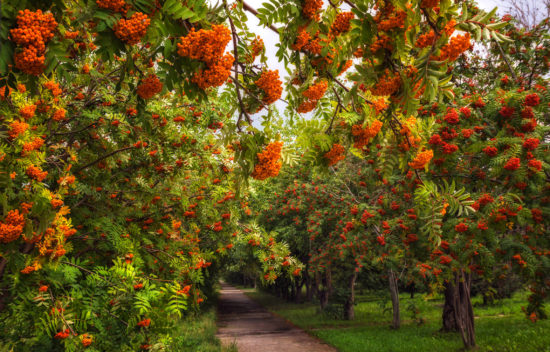
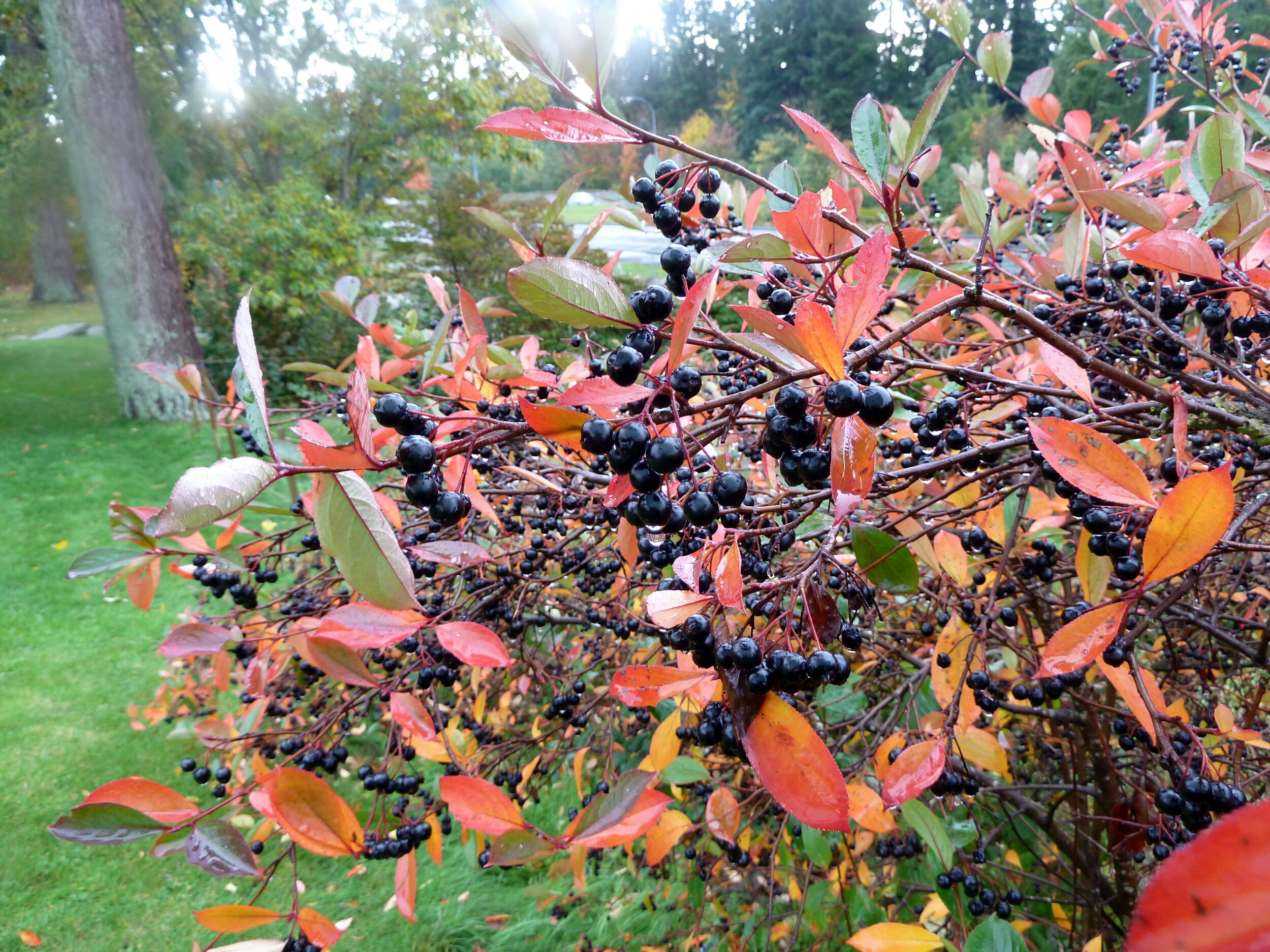
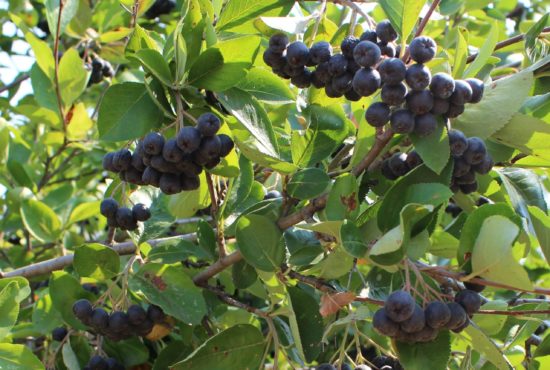
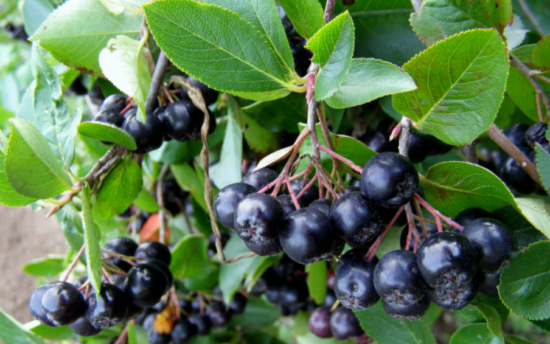
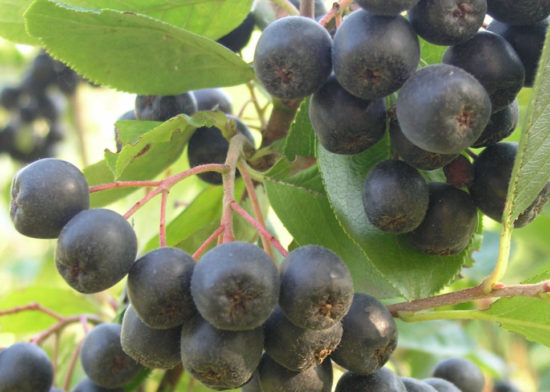
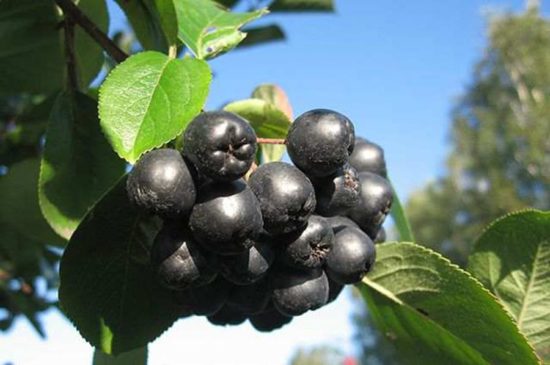
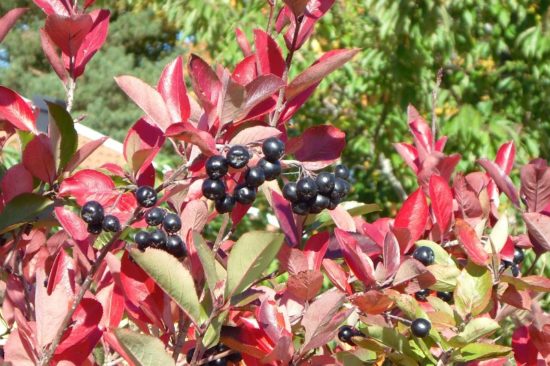
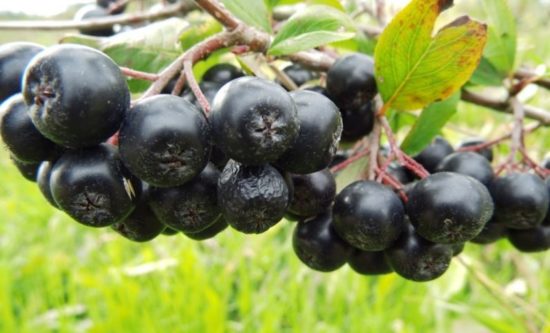
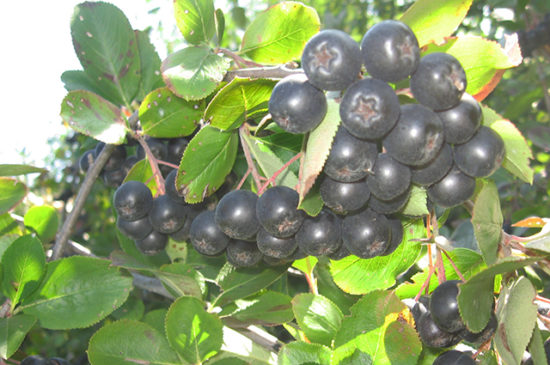
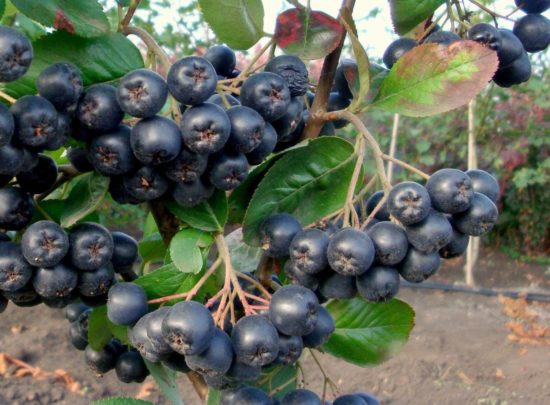
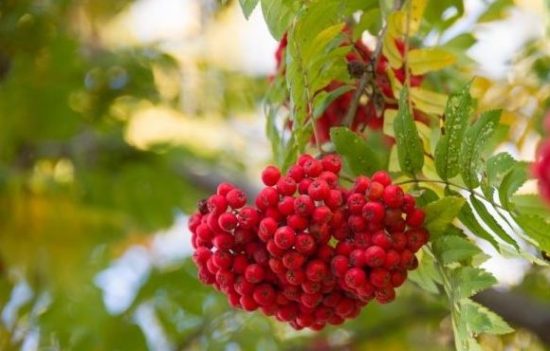
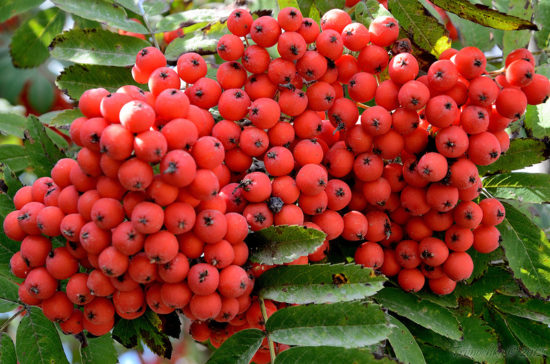
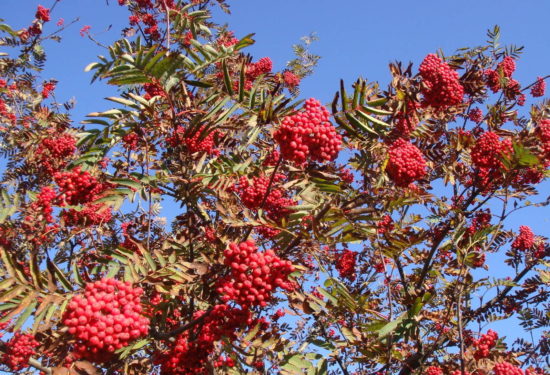
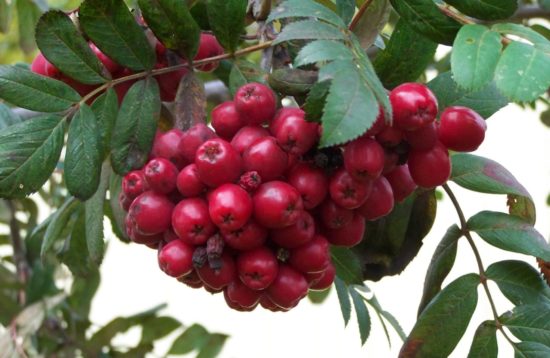
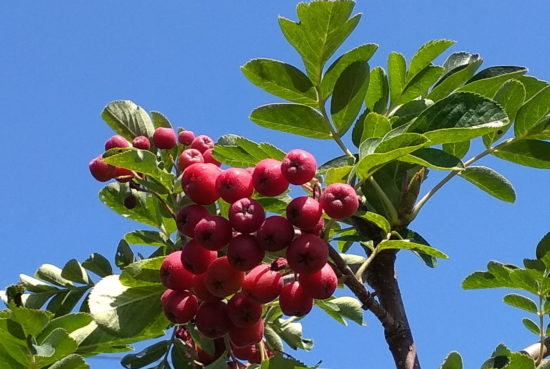
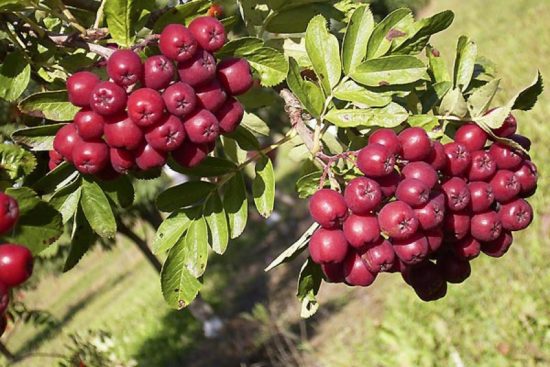
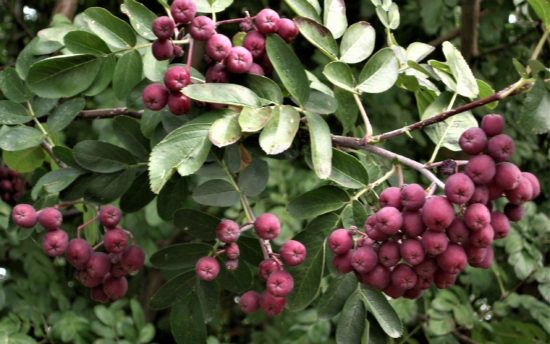
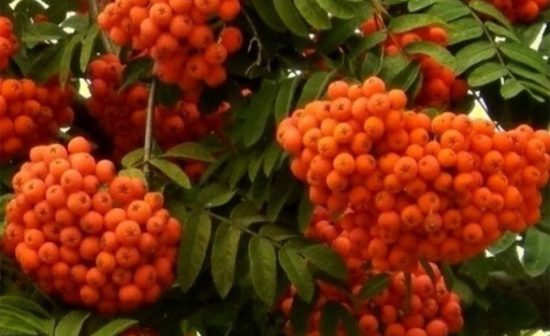
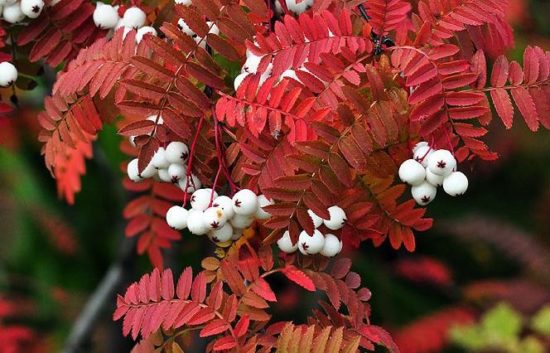
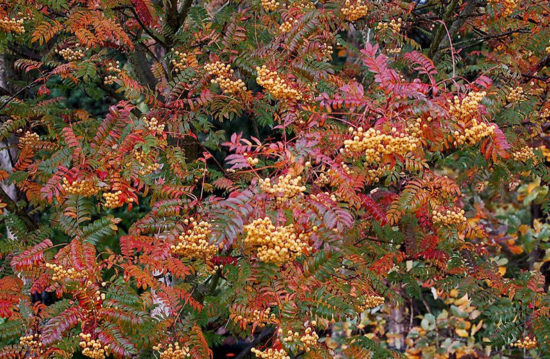
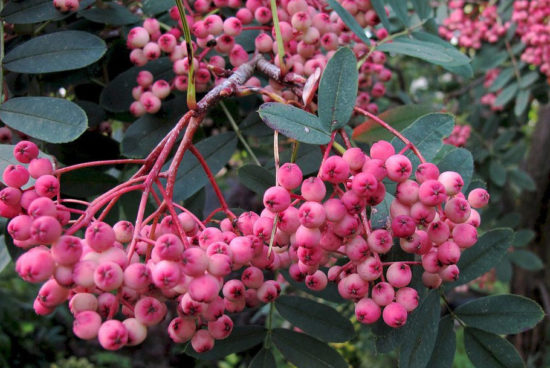
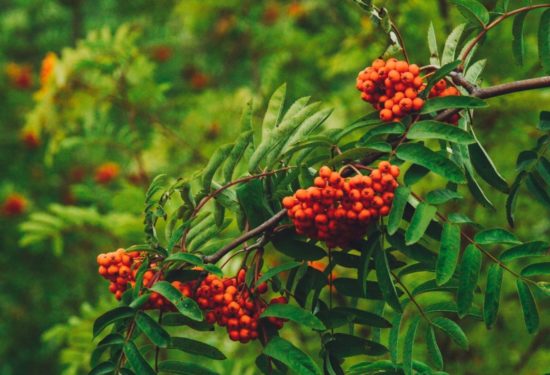

 CUCUMBERS NEVER GET SICK, I'VE BEEN USING ONLY THIS FOR 40 YEARS! I SHARE A SECRET WITH YOU, CUCUMBERS ARE LIKE THE PICTURE!
CUCUMBERS NEVER GET SICK, I'VE BEEN USING ONLY THIS FOR 40 YEARS! I SHARE A SECRET WITH YOU, CUCUMBERS ARE LIKE THE PICTURE! You can dig a bucket of potatoes from each bush. Do you think these are fairy tales? Watch the video
You can dig a bucket of potatoes from each bush. Do you think these are fairy tales? Watch the video
 How our fellow gardeners work in Korea. There is a lot to learn and just fun to watch.
How our fellow gardeners work in Korea. There is a lot to learn and just fun to watch. Eye trainer. The author claims that with daily viewing, vision is restored. They don't charge money for views.
Eye trainer. The author claims that with daily viewing, vision is restored. They don't charge money for views. A 3-ingredient cake recipe in 30 minutes is better than Napoleon. Simple and very tasty.
A 3-ingredient cake recipe in 30 minutes is better than Napoleon. Simple and very tasty. Therapeutic exercises for cervical osteochondrosis. A complete set of exercises.
Therapeutic exercises for cervical osteochondrosis. A complete set of exercises. Which indoor plants match your zodiac sign?
Which indoor plants match your zodiac sign? What about them? Excursion to German dachas.
What about them? Excursion to German dachas.